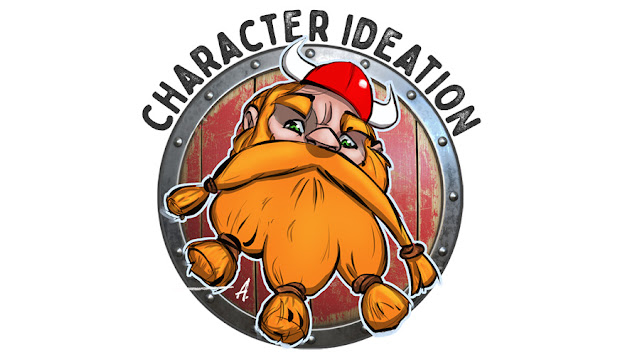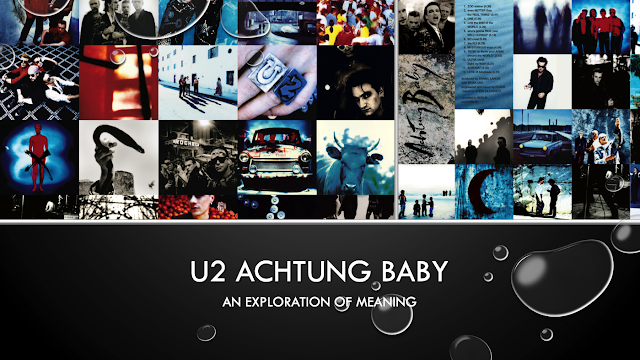ENGL 596 Digital Narrative: Character Ideation
Introduction
This is a digital narrative about character ideation and design. I’m going to walk you through how I dream up a fictional character, the decisions I make about the character and how I make them, and the process of illustrating the character from rough sketch to fully realized drawing. I don’t do this alone, the character usually steps in and helps.
For my purposes here, ideation is the process through which a concept or idea originates and is refined. This, initially, is a mental exercise supported by influences that can include experiences, influential books, movies, people in my life, etc. Some ideas can come out of nowhere and others might originate while sitting in a coffee shop surrounded by interesting strangers.
The character I’m about to introduce you to is heavily influenced by books and movies and tropes of the fantasy genre. Like many nerds that have spent years reading fantasy novels and playing role playing games, I’m steeped in the typical—I should say stereotypical—characteristics of the genre and the characters that populate it. And I’ve come to dislike a great deal of what makes up the bulk of modern fantasy fiction. I prefer something a little less formulaic, less predictable, and less boring; characters that don’t exactly fit the mold. However, recently, deep into a game of Dungeons and Dragons—played remotely with players from two countries and spread over five states/provinces (fitting for the digital theme we've got going on here)—we found ourselves in need of a little help. The characters that made up our merry band of adventurers were, how should I put it? A little weedy; upstart wizards with no real power and sneaky types that aren’t much help in a fight. Long term survival was iffy, at best.
I offered to introduce a character to be the bruiser for the group. Someone that could take and deliver a beating so that the others might stand a better chance of getting out of a scrape alive. Without someone like this, the game, and the merry adventurers, would surely be short-lived. In response to a debate with my friend, a dyed-in-the-wool fan of all things fantasy that harken back to Tolkien, the godfather of most of the tropes we find the genre mired in, I offered to create a character that was so in line with the tropes that even my friend would have to concede that the tropes were, for lack of a better term, tired.
When searching for flat, two-dimensional characters in most fantasy fiction, one need look no further than the unfortunate Dwarves, or if you’re a Tolkien die-hard, Dwarfs. I’ve been lectured by at least one rabid acolyte that Tolkien felt so strongly that it was “-fs” not “-ves” with which we refer to the multiples of the stout folk that he argued with his editors at length about it. I don’t have a source for this, but some Tolkien scholar might. If comments were enabled on this blog, you could post a link to this critical debate there, but they aren’t. Arguments on this critical point shall have to wait.
Step 1: The initial concept
I decided to create a dwarf and that he would be a warrior. The character would be male because that complies with the stereotype. Dwarf; warrior; uses an axe; drinks a lot; has a beard, preferably with braids or knots or other such décor; likes fighting evil; big fan of gold and treasure; prefers mountains and caves, etc. That seemed flat, two-dimensional, and stereotypical enough to get started.
If you need a visual of what this might look like and sound like, check out this video of Gimli, from The Lord of the Rings (sadly, I can't embed this video on the blog due to YouTube limitations). He’s quite possibly my favorite character from that story, despite being a confirmation of all the tropes that irritate me. At least he’s the mold from which all the tropes originate.
Step 2: Name the character
I don’t always finalize the character's name this early, but it is always an early consideration. The name is important because once named, the character begins to have substance. The character begins to exist and to breathe. Since I was relying on the Tolkien mold of dwarves, and because Tolkien was a big fan of Norse mythology, I did a Google search for Old Norse names. Google rewarded me with “Hrooar,” which means warrior in Old Norse. The meta-aspect of a warrior named "warrior" and because the name that sounds a lot like a roar or battle cry, I felt like I’d struck gold (which would please a dwarf). Hrooar is pronounced Hroar, the H is not silent, or Hrawr for the few folks that might find the hairy little fellow attractive—the H, again, is not silent.
Step 3: Who is the character? What does Hrooar want? What does he stand for?
My plan was that Hrooar was a good guy. He would be that indomitable warrior who cheerfully rushes into battle against impossible odds to fight for justice and protect his friends. He would hate cowardice, evil, meanness, thieves, charlatans, etc. When not fighting, he’d be drinking stout dwarven ale or smoking a pipe or doing something like sharpening his axes, or admiring his helmet collection, or counting his treasures; nothing too cerebral and nothing that would rob him of the two-dimensionality of the original stereotype I set out to mock.
Step 4: What does the character look like?
This is where the character comes to life for me. I begin to draw and sketch the character and make decisions about appearance, features, etc. This also where the character starts talking to me. As I sketch, the character comes to life and shares opinions about my work. Hrooar, in this case, was more than happy to let me know which sketches he felt represented him best. Hrooar has a Scottish accent and because I can't write in that accent any better than I can pull off speaking it, you'll have to take my word for it. For some reason, all dwarves in all fantasy settings are actually from Scotland.
Here are a few early iterations of Hrooar's design. He and I agreed that the long horns were a bit over the top and that the grimace failed to capture his happy-go-lucky, evil-slaying, force-of-good nature.
 |
| Early roughs. Beard and helmet exploration. pen, ink, marker, digital. |
The next set of sketches yielded some fruit. After playing around with horn shapes and helmet sizes and facial expressions, we settled on an expression that seemed slightly bored but pleased and determined the helmet should look a little more like a cap, with short, pointy horns. Hrooar informed me that he liked to wear his helmet at a tilt like I used to wear my flight cap. I thought that was a wise choice. Once we'd nailed down his appearance, he began to pop up in all sorts of places in my notebooks. He offered commentary on class notes and discussions, he assisted in compiling shopping lists, and he read over my shoulder. That’s the thing about characters: they begin to take on a life of their own. They tell you things, make decisions, have inclinations (and opinions!), and at some point, you have to let them take you where they want to go.
 |
| More roughs. Experimenting expressions, helmet, and beard. Pen/pencil sketches. |
Here are a few examples of moments when Hrooar decided to grace me with his presence in one of my classes and provided running commentary (cleaned up for legibility):
Step 5: The Full Render
After a few weeks of living with Hrooar and watching him grow from initial concept to full-fledged personality with ideas of his own, it was time to take the sketches a bit further and bring him to life, in color. For me, this usually works best after I’ve spent a few weeks with a character or idea. By the time I sit down to create this stage of character illustration, I’ve thought about (and talked it over with Hrooar) hair color, eye color, hair style, garb/costume color and design, attitude, posture, and the way the character carries himself. I opted for a headshot instead of a full figure illustration. The choice boiled down to how much time I had. The steps below are the sequence in which I construct the drawing. The final illustration is the title pic for this post.
 |
| Clockwise: digital pencil layout, ink over pencil, inks without pencil, flat color. |
 |
| painting in some highlights |
Step 6: Get stuck in
At this point Hrooar is ready to go. Since he was created for a role-playing game, the only thing that remains is to work out the game details and to play. However, I could just as easily design a comic about him, write a short story about him, or I could develop a more robust narrative about him and turn that into a novel. Of course, I'd have to repeat this process for the other major characters in the story. Then I'd have to go through a similar process for the story itself. It's work and it takes time, but it's also a lot of fun.
An Admission:
Conclusion & notes on the process:
I’ve been doing this for a long time. I think it’s important to think about the parts of the process I haven’t gone into great detail about—especially on the artistic side of things. It’s important to think about shape language. That is, the way the character’s shapes communicate things about the character. It’s important to think about proportions and exaggerations, and it’s important to think about what color does to mood and how it is perceived. Because each of these topics are easily deep enough to create a degree program about, I will simply provide some additional viewing material at the end of this article in case you want to check them out for yourself. Some of the other things I didn’t cover in detail here are costume design. This includes clothing and armor and weapons. Each of these communicates the character’s personality and is an important consideration and design choice. I will say that Hrooar’s little, horned helmet went through several iterations before I felt I’d gotten it just right. It’s red, tilted a little, almost comically small, but it presents a certain attitude, light heartedness, and it communicates that he’s probably willing to take, and return, a punch.
And because this question always comes up: For traditional work I use whatever pencil I have on hand, but my preference is for Staedtler wooden pencils or Graphgear 1000 mechanical pencils, Micron pens, and various brush pens. For the digital work I use Clip Studio Paint, Adobe Photoshop, and a few other random little apps. I draw on a 24" display tablet made by XP-Pen.
Shape Language:
 |
| Rough: Hrooar facing down Ulf the Bugbear and his dire wolf. Hrooar survived. |



